Love beautiful banksias, but no room in your east coast garden for the iconic Banksia integrifolia, Coast Banksia? It can grow to 15 metres Well, never fear. New cultivars of dwarf banksias are increasingly coming onto the market to delight all gardeners, particularly those on the east coast!
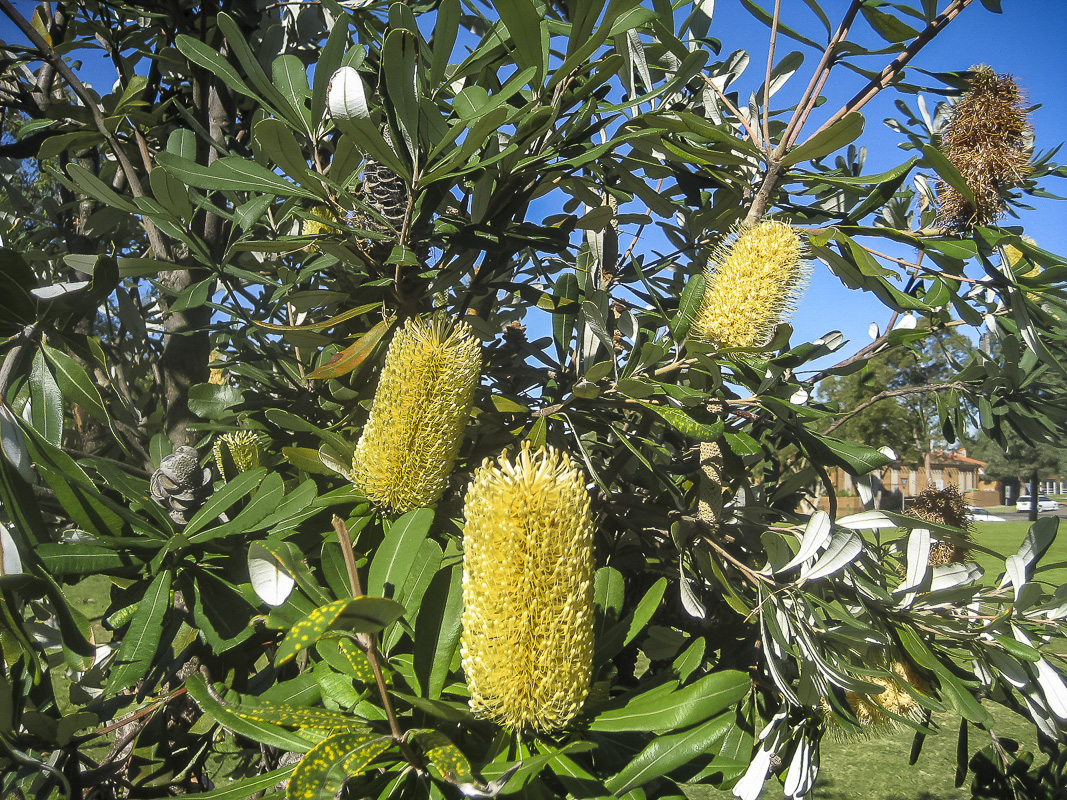
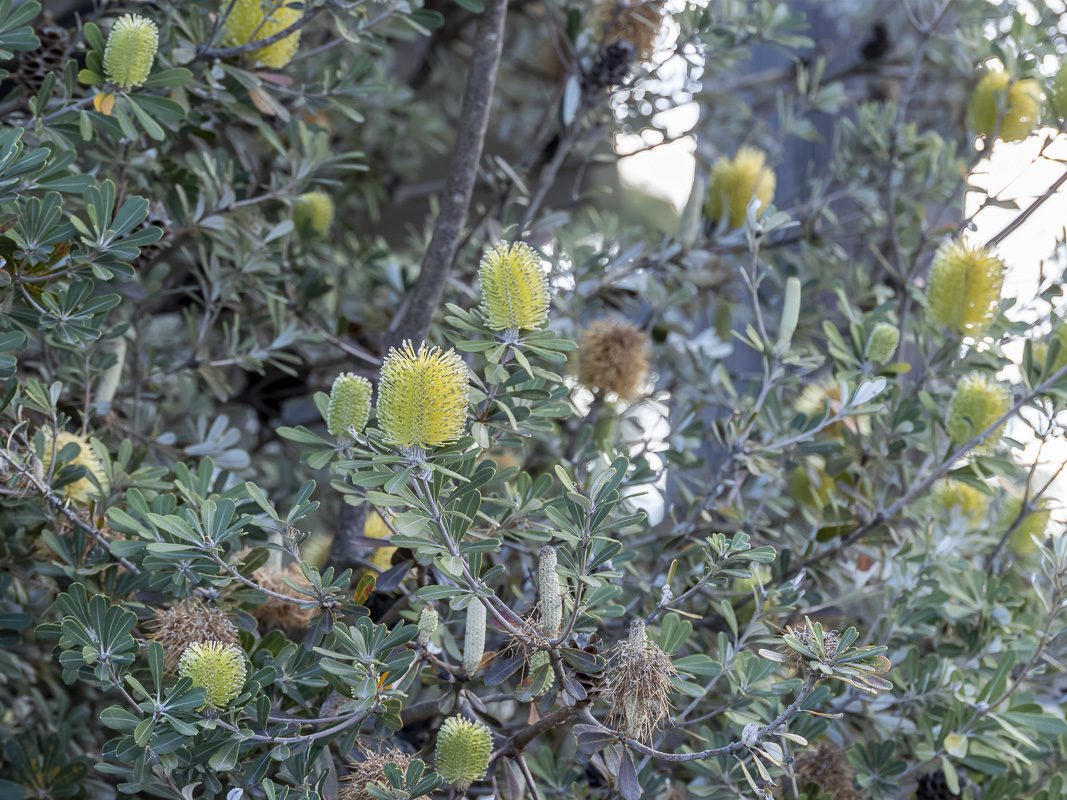
Over the past thirty years, many low-growing forms of banksia from east coast and seaside locations have been recognised by nurserymen and plant breeders as perfect specimens for the modern garden. Low growing, compact, attractive flowers and bird attracting, they’re a beautiful addition to any garden.
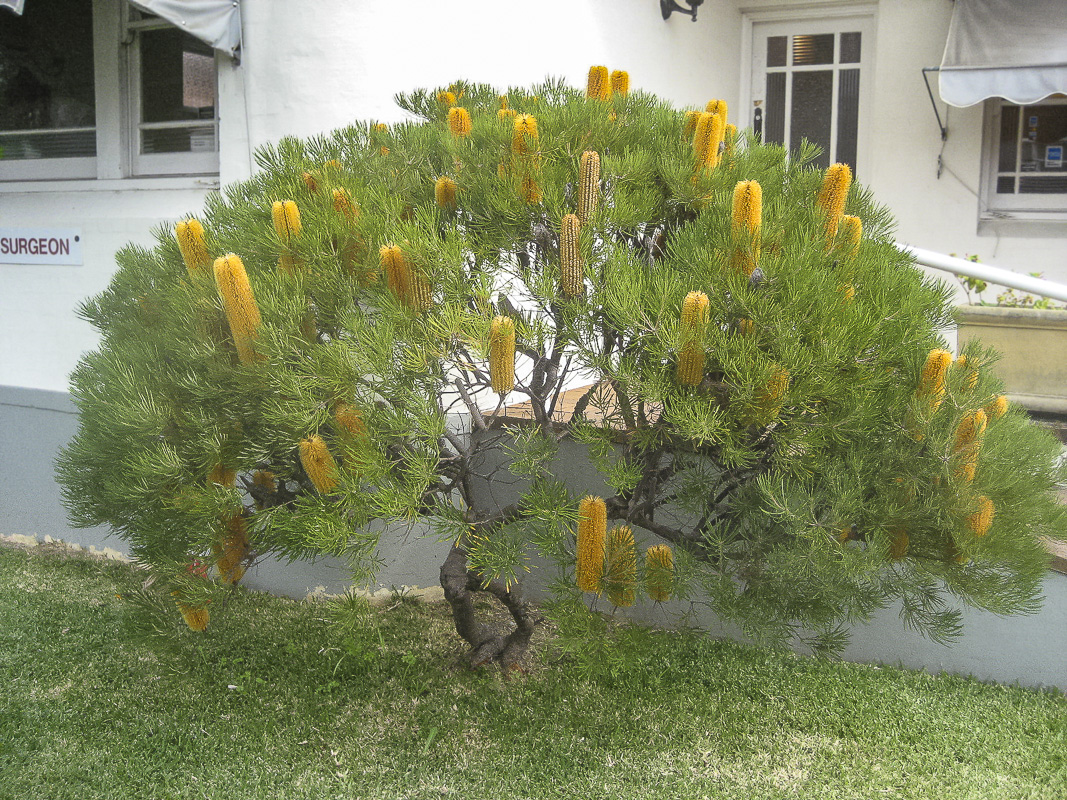

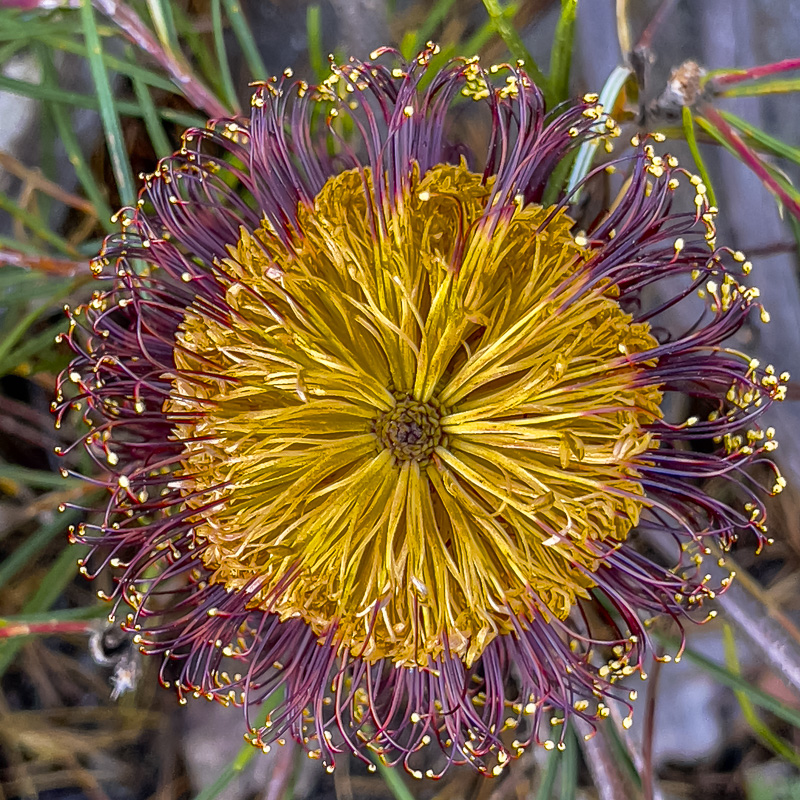
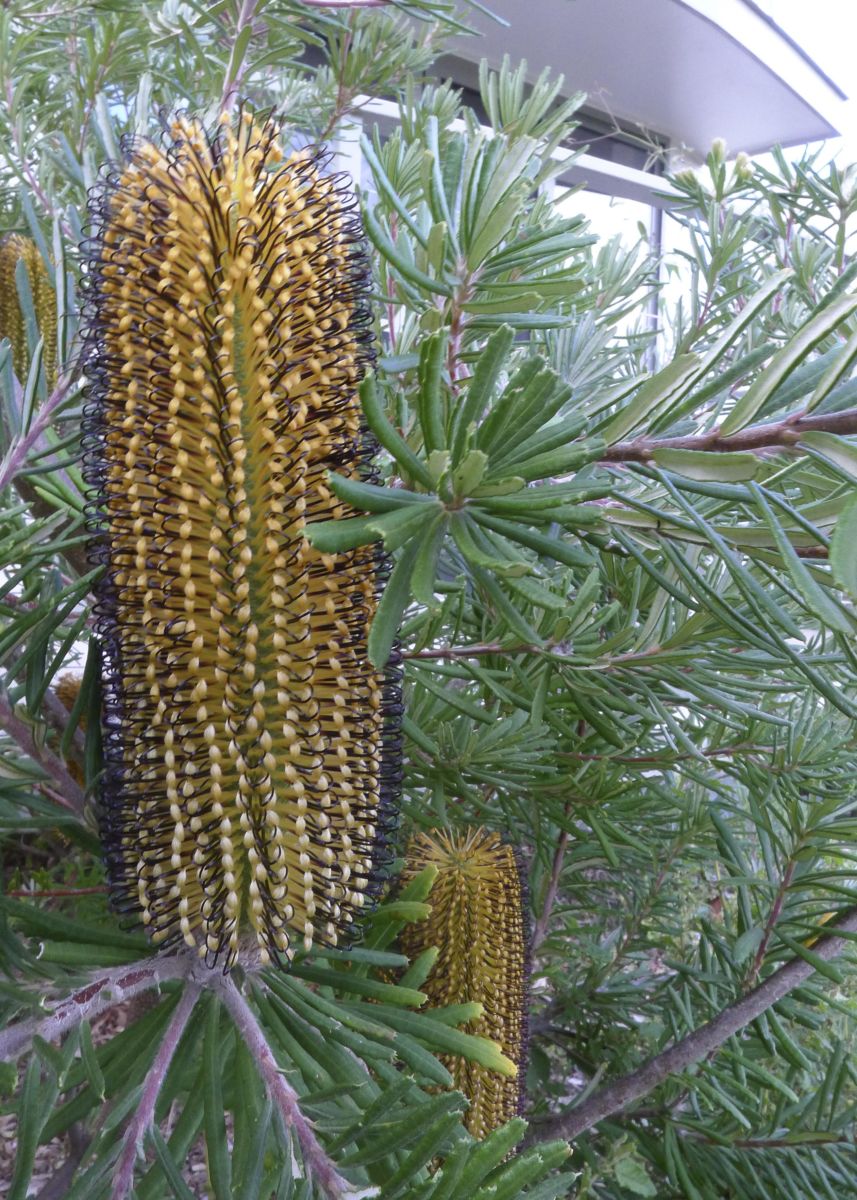
Strong coastal winds create bonsai-like banksias
The vast majority of today’s cultivars are taken from the NSW south coast or somewhere along the coast of Victoria, where they are exposed to the strong coastal winds. The result is that some of the common eastern species, such as those from the Banksia spinulosa complex, Banksia ericifolia and Banksia serrata, tend to grow as dwarf forms.
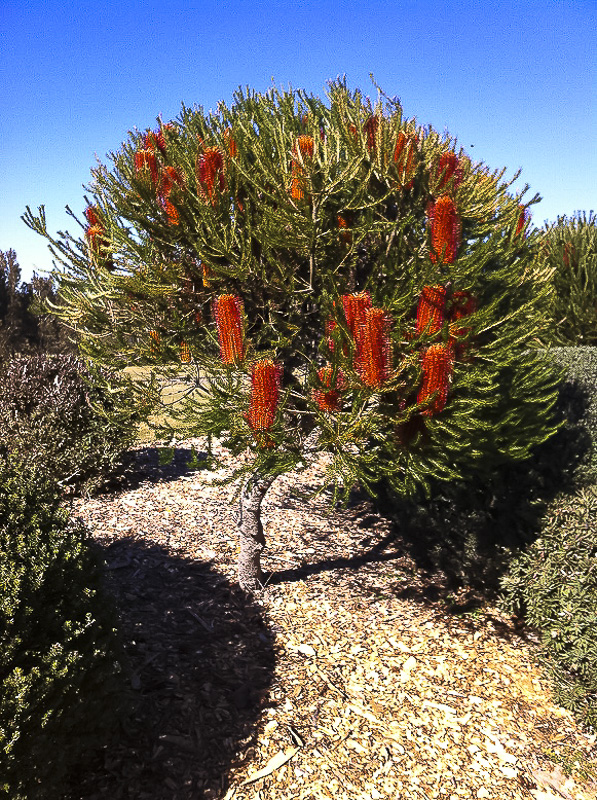

The full wind force of Mother Nature turns them into bonsai-like specimens that remain true to form – even if they are cultivated under more benign conditions. Some of the varieties that are subjected to strong headland winds barely even get off the ground. Their resulting growth habit makes them perfect garden subjects for the average suburban garden.

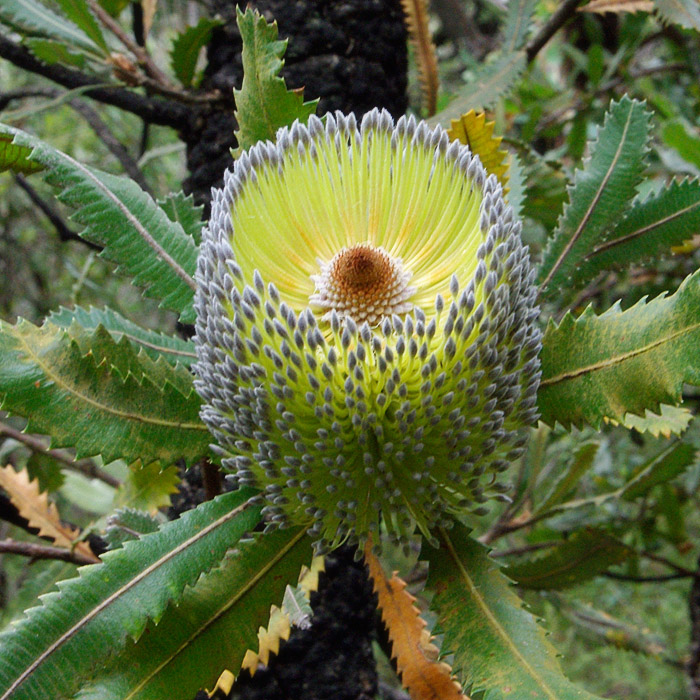
Mother Nature’s bonsai of mature Banksia serrata, which normally grow upright to 5 to 6 metres high
Unfortunately, some of these banksias co-exist on land deemed to be valuable real estate essential for accommodating our growing population. This places their existence under serious threat – making their propagation and preservation all the more important.
Beautiful ground hugging banksias
Banksia oblongifolia
One example of a very low-growing banksia is a form of Banksia oblongifolia that originates near South West Rocks on the mid-north coast of NSW. Normally, Banksia oblongifolia reaches 2 to 3 metres in height. However, in my garden in western Sydney, this form barely gets beyond 30 centimetres despite being grown well away from any coastal winds.
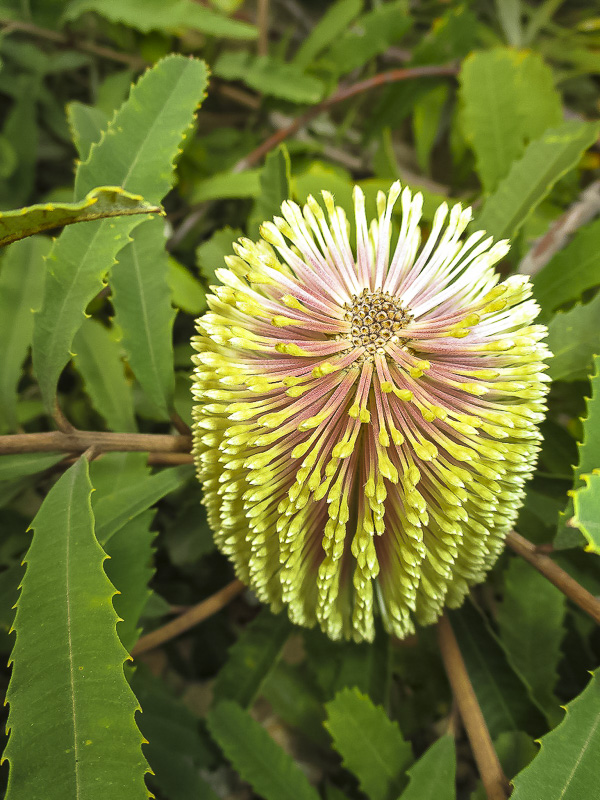
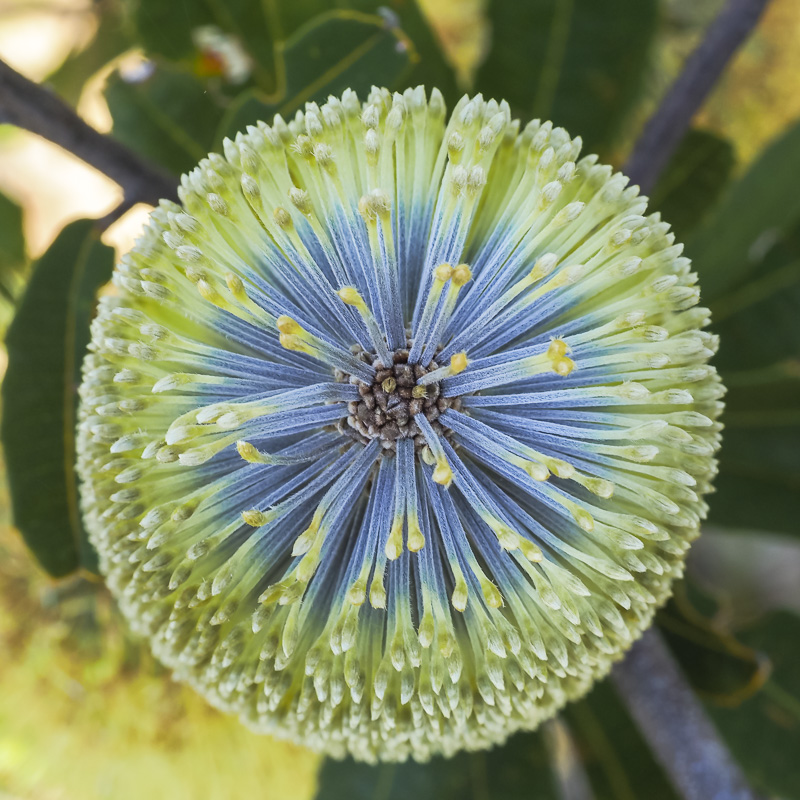
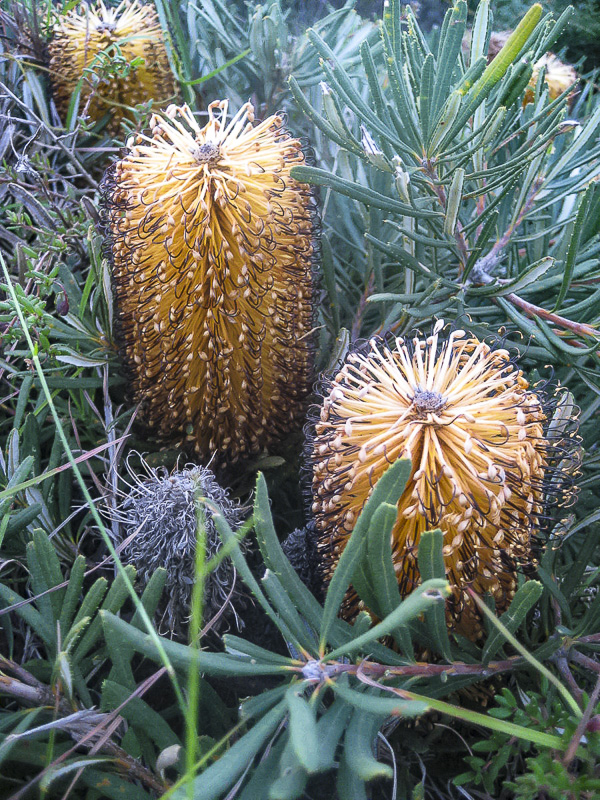
Another one that has made it to the nurseries is Banksia ‘Stumpy Gold’. This form of Banksia spinulosa var. collina, developed by Victorian nurseryman, Richard Anderson, originates from Catherine Hill Bay on the NSW Central Coast. It reaches only 50 centimetres in height – surprisingly shorter than the usual 3 metres for Banksia spinulosa var. collina. At Catherine Hill Bay, there are a variety of colour forms found on this piece of headland, including red, gold and black!
Banksia spinulosa var. collina with black styles at Catherine Hill Bay, NSW, image Karlo Taliana
‘Birthday Candles’ and ‘Cherry Candles’
One of the earliest Banksia cultivars released into the nursery trade was Banksia ‘Birthday Candles’, a form of Banksia spinulosa var. spinulosa growing to only 45 centimetres high by one metre wide. Bill Molyneux of Austraflora developed this commonly sold cultivar. Plant breeder rights were granted in 1989. It originates from exposed headland at Schnapper Point near Ulladulla on the south coast of NSW. Most growers have reported it to be unreliable in flower, particularly when cultivated further north along the east coast from its natural distribution. However, it is blooming well in western Sydney.
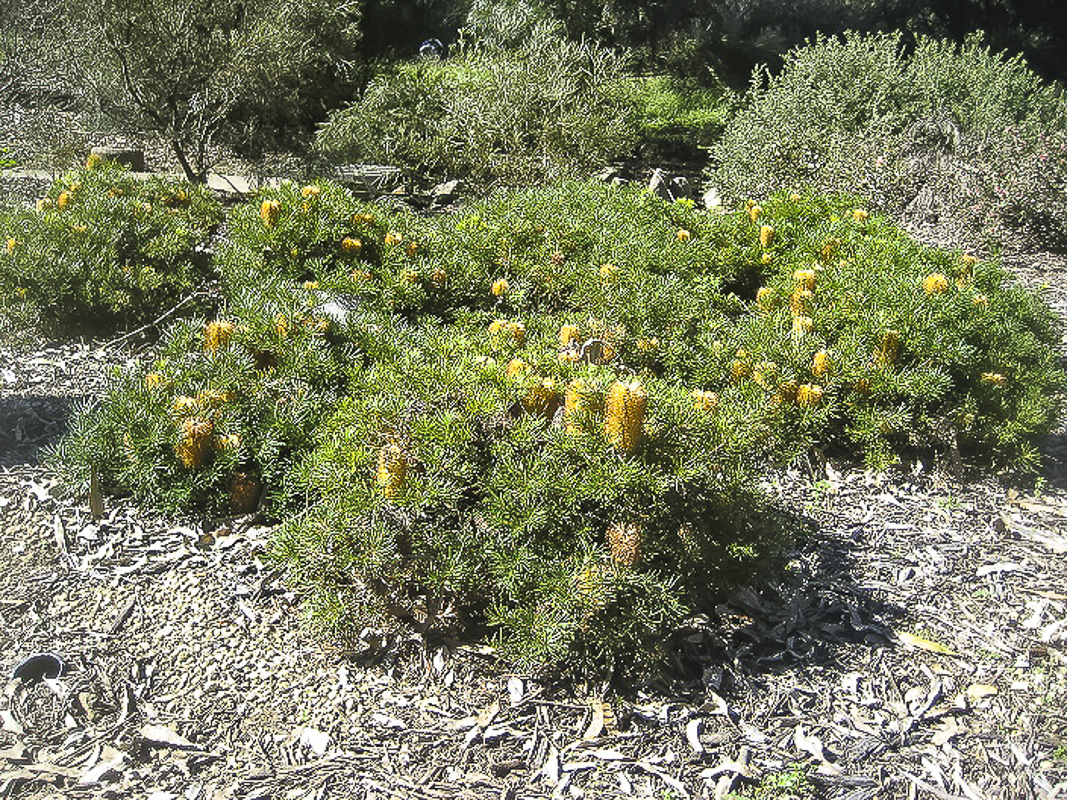

Its close relative, Banksia ‘Cherry Candles’, released by Austraflora in 2004, has deeper ‘cherry red’ flowers. It consistently puts on a massive show of flowers every autumn, despite having originated from the same location as Banksia ‘Birthday Candles’. So impressive in flower, it was voted into Gardening Australia’s ‘Top 20 natives’ over the past two decades. While it is thought that both ‘Birthday Candles’ and ‘Cherry Candles’ reach a spread of one metre wide, my specimen of ‘Cherry Candles’ is now getting close to two metres wide.

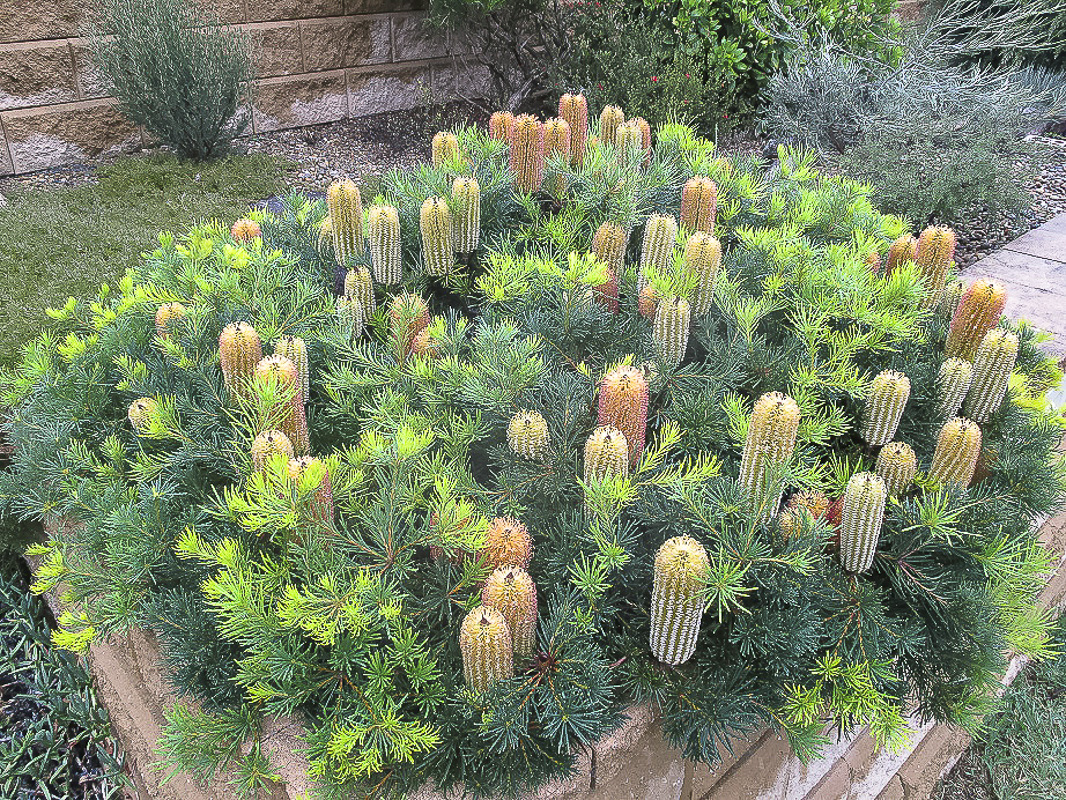
Banksia integrifolia prostrate
A prostrate form of Banksia integrifolia known as Banksia ‘Roller Coaster’ is ideal for growing downwards along a steep bank particularly where you want to prevent soil erosion. It spreads several metres, so again you need a bit of space. While it is a very hardy shrub, it tends to be shy when it comes to flowering.
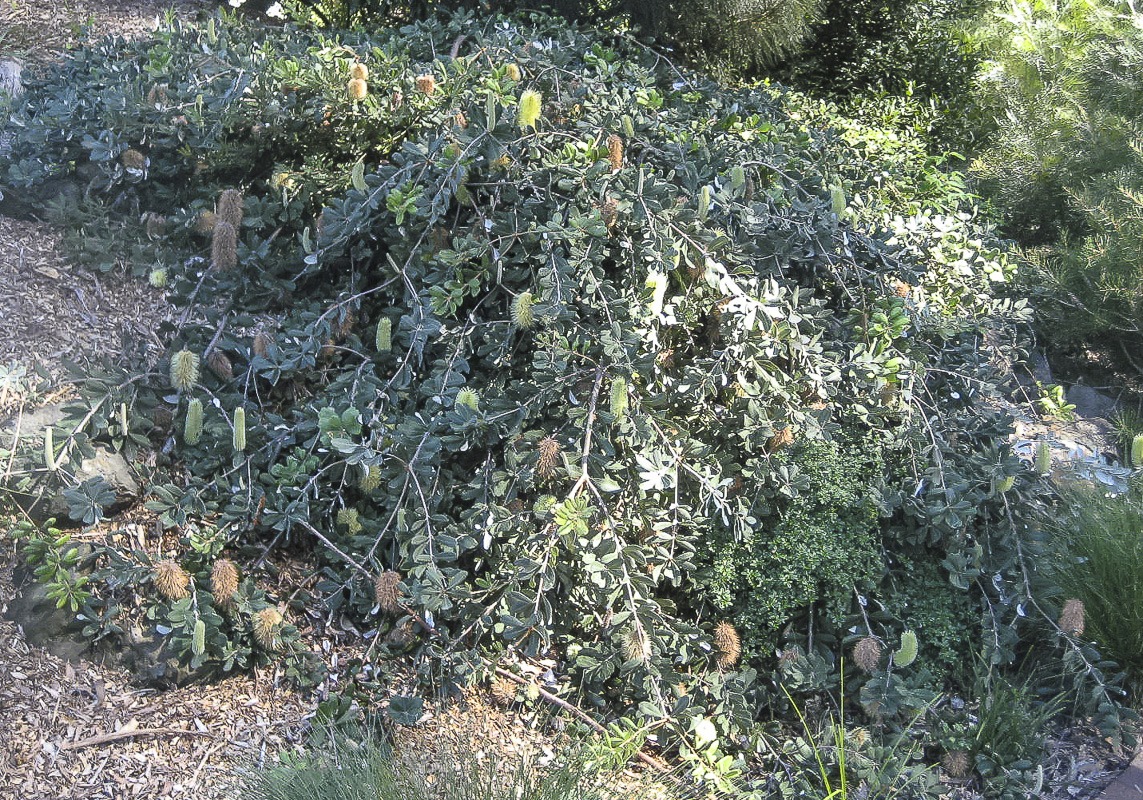
Banksia integrifolia ‘Roller Coaster’ at Illawarra Grevillea Park, Bulli NSW, image Karlo Taliana
Another option – Banksia ericifolia
Banksia ericifolia ‘Bulli Baby’ makes an excellent garden subject. It takes up very little space in the garden at only 1.5 metres high by 1.2 metres wide. Despite its small size, when it flowers, it does not disappoint. One five-year old shrub had no less than 50 to 60 flower heads in one season. Along with Banksia ‘Cherry Candles’, it would have to be amongst the best of the baby banksia cultivars you could grow in a suburban garden.

Banksia ericifolia ‘Bulli Baby’, in my garden, image Karlo Taliana
Beautiful waist high banksias for east coast gardens
If you have slightly more room in your garden, Banksia spinulosa ‘Coastal Cushion’ grows to 60 centimentres high with twice the spread of Banksia ‘Birthday Candles’ and Banksia ‘Cherry Candles’.
Also originating from Schnapper Point, this form was collected by Neil Marriott and propagated by Richard Anderson. Some reports have indicated that it is more reliable in flower even further north extending through north-eastern NSW and south-eastern Queensland.
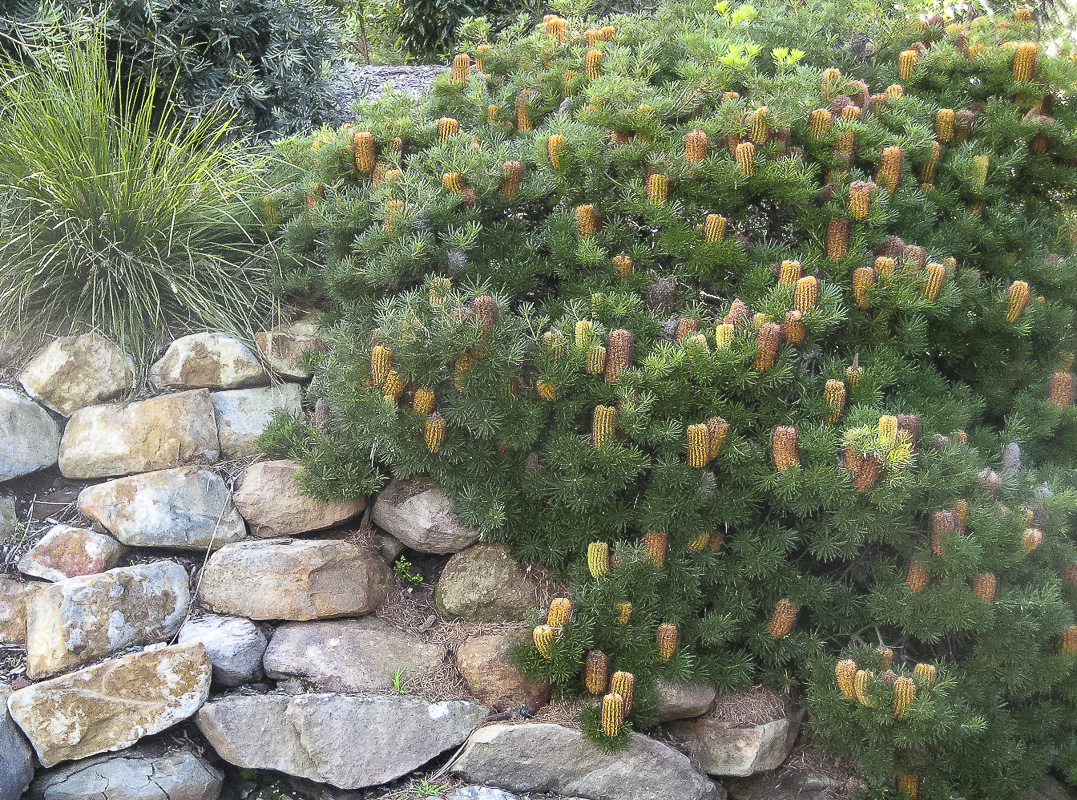
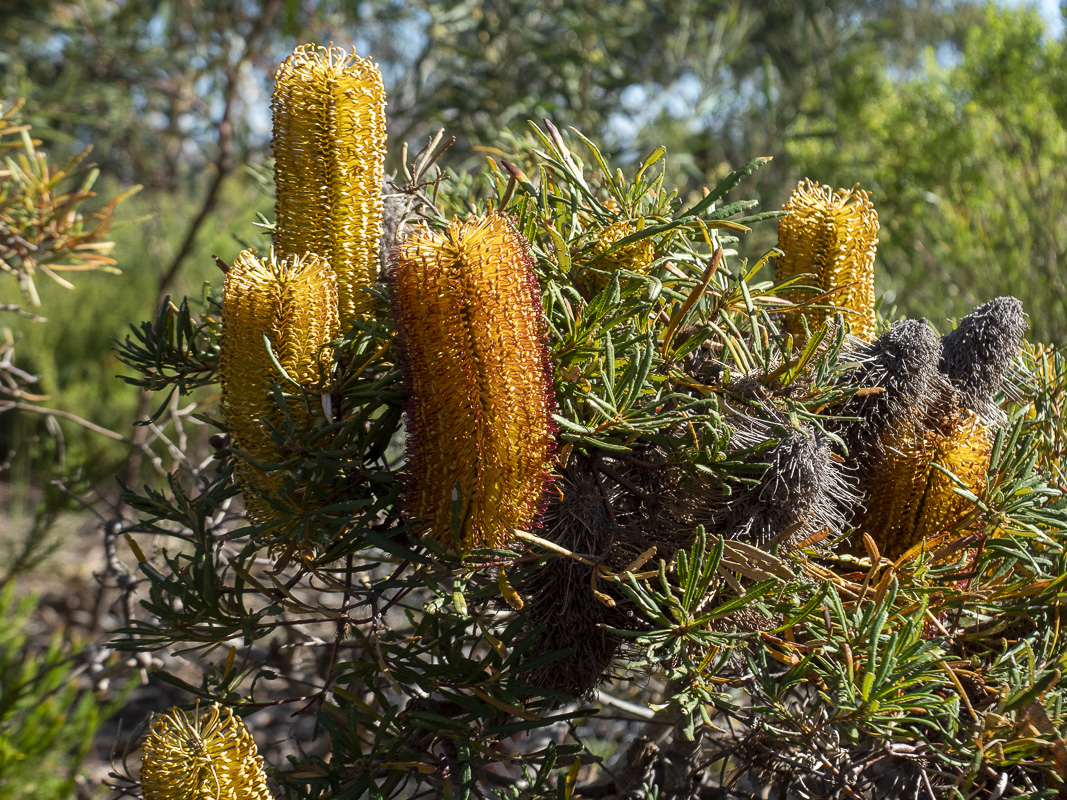
Similar in size to ‘Coastal Cushion’ but with a different flower colour is Banksia ‘Yellow Wing’ produced by Austraflora. It was developed by the deliberate hybridisation between Banksia ‘Giant Candles’ and Banksia spinulosa var. collina from the Carnarvon Gorge in Queensland. Despite its prominent orange flower spikes, it was dubbed ‘Yellow Wing’ because it was often frequented by New Holland honeyeater.

Brush Wattle bird photo courtesy of Armella Maria Pratt
Bigger banksias for east coast gardens
Banksia ‘Giant Candles’ itself is often too large at 5 metres round for most suburban gardens, but it can always be pruned back very hard and allowed to re-sprout from its lignotuber. Watch out for yellowing of new growth – this often indicates your plant may be hungry for iron-chelates. Banksia ‘Giant Candles’ is a hybrid between the Gosford form of Banksia ericifolia and a form of Banksia spinulosa var. cunninghamii. It has impressive flower heads up to 40 cm long. It seems to tolerate shallow topsoils and copes better than most banksias on heavy soils.
Here it is growing very happily on clay soils in the Hunter Valley, flowering profusely for much of the year.
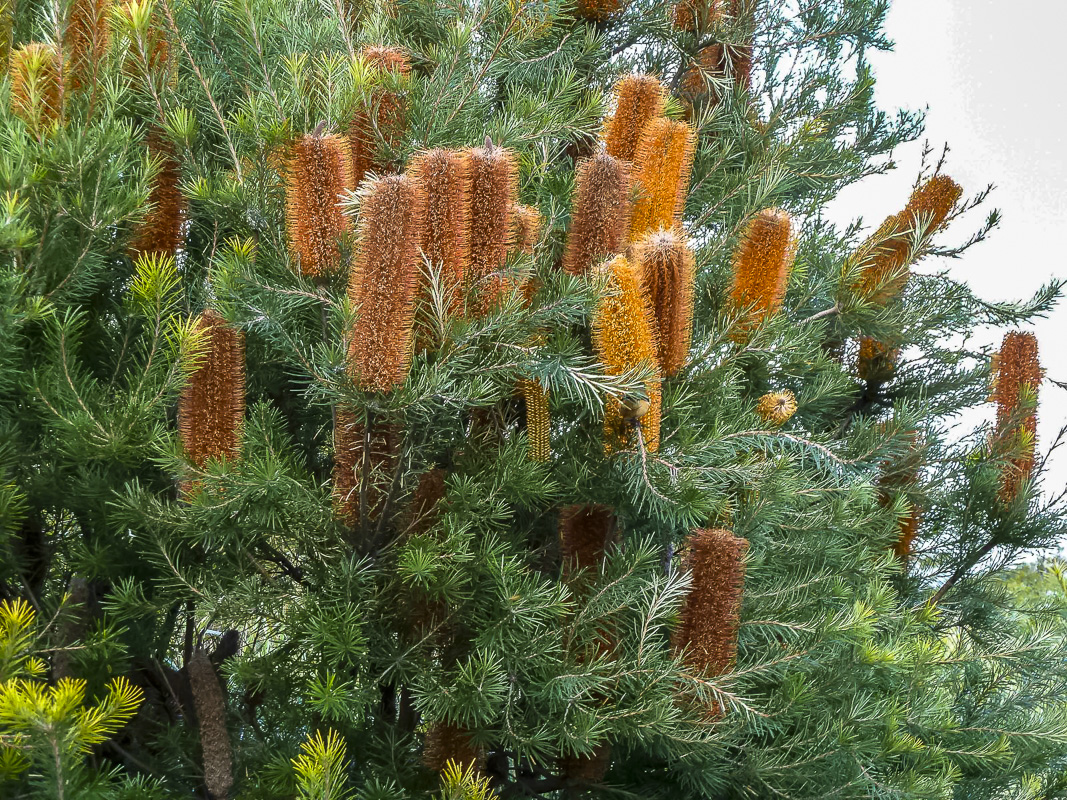
Another interesting banksia cultivar is Banksia ericifolia ‘Bronzed Aussie’, propagated by Rod Parsons from Carawah Nursery. Growing to about two metres high, it has terminal flower heads with honey-coloured pistils and bright red styles. The unusual feature is the bud clustering at the base of the main flower. Its origin is unknown, but apparently seed was given to Rod’s father by a member of the Society for Growing Australian Plants many years ago and it has been propagated vegetatively ever since.

This is Banksia ericifolia ‘Bronzed Aussie’ in my Sydney garden, image Karlo Taliana
Banksias galore!
So, there is quite a variety of banksia cultivars available for use in your garden and more coming onto the market every year.
All gardeners should consider finding a place for at least one banksia in their garden. Keep in mind that eastern banksias flower around autumn, a time when there is little else in flower. By doing this, you will provide a valuable source of nectar for some of the local native birds.
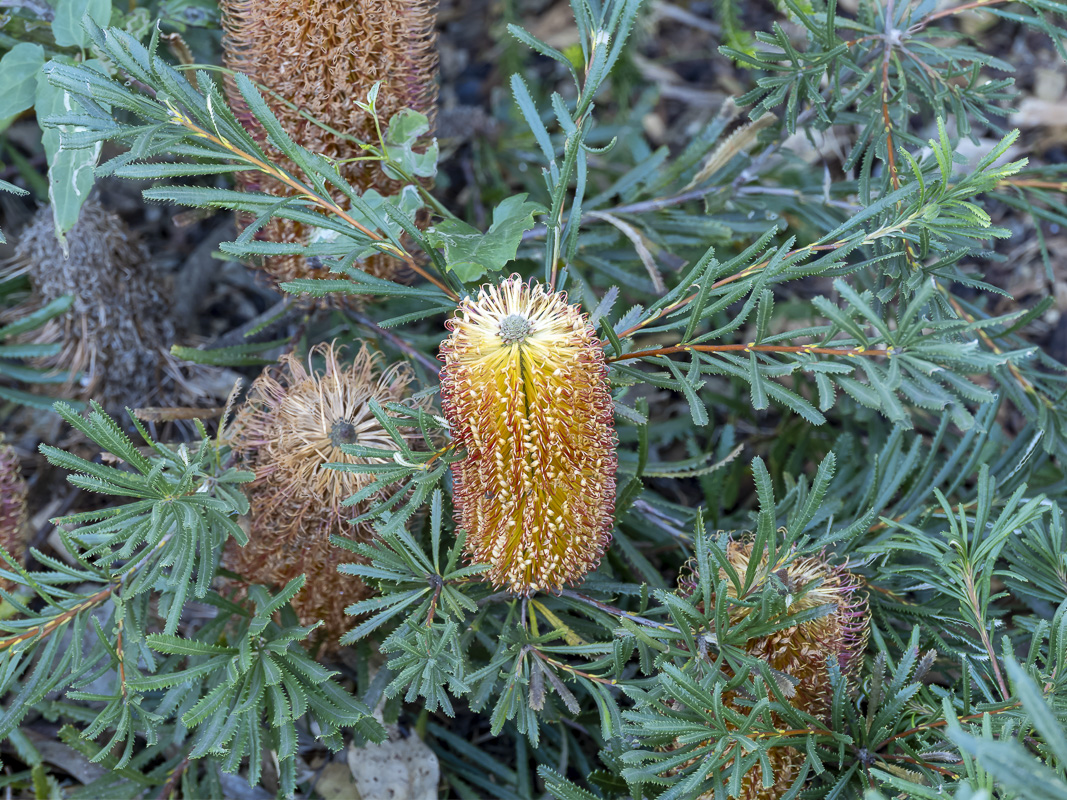
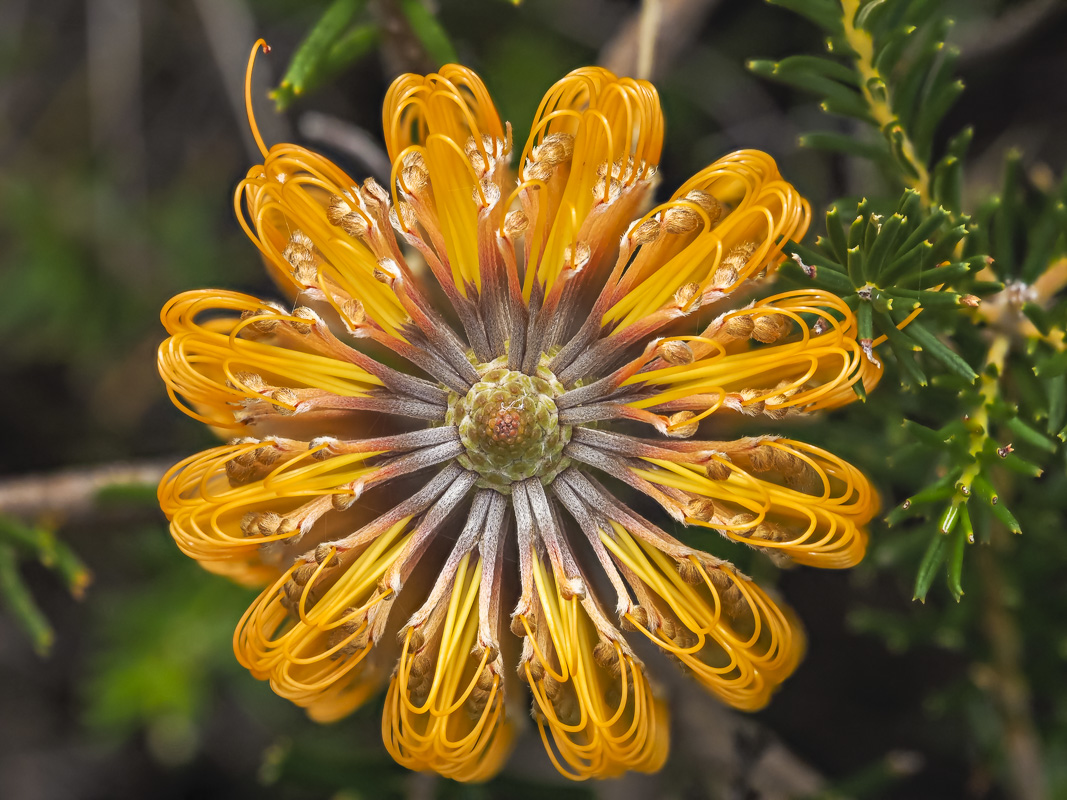
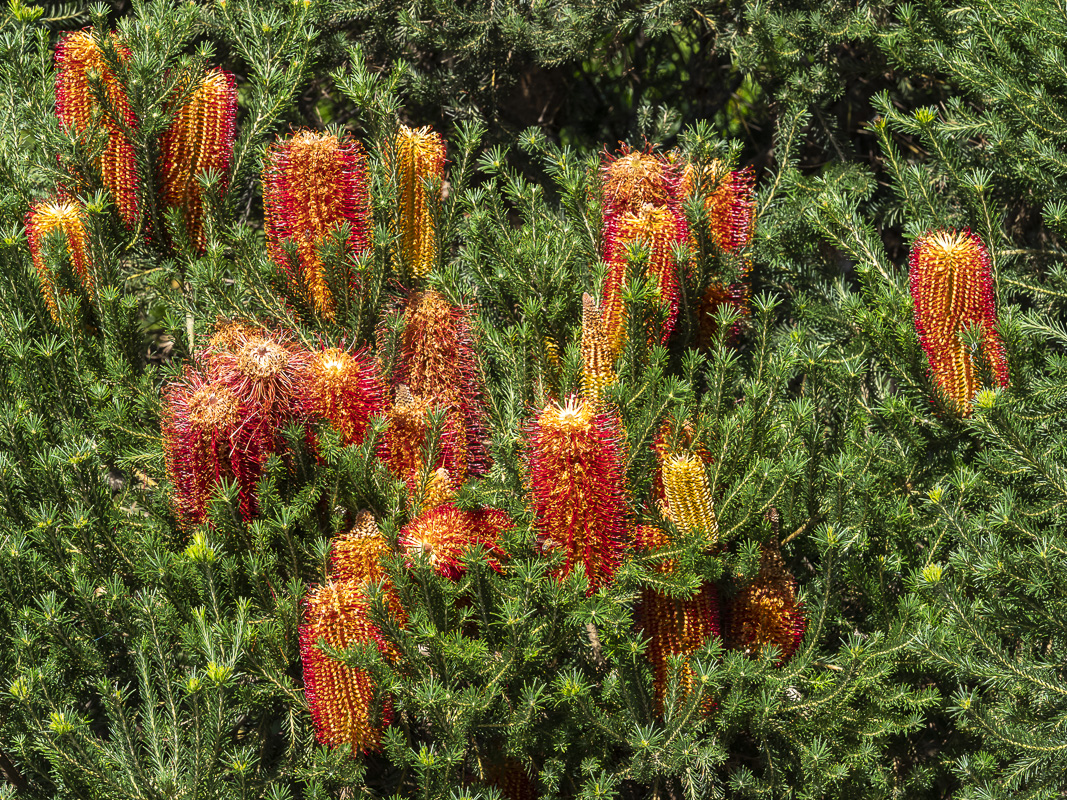
For more banksias, see the ANPSA site: https://anpsa.org.au/native-plant-profiles/?_sf_s=banksia
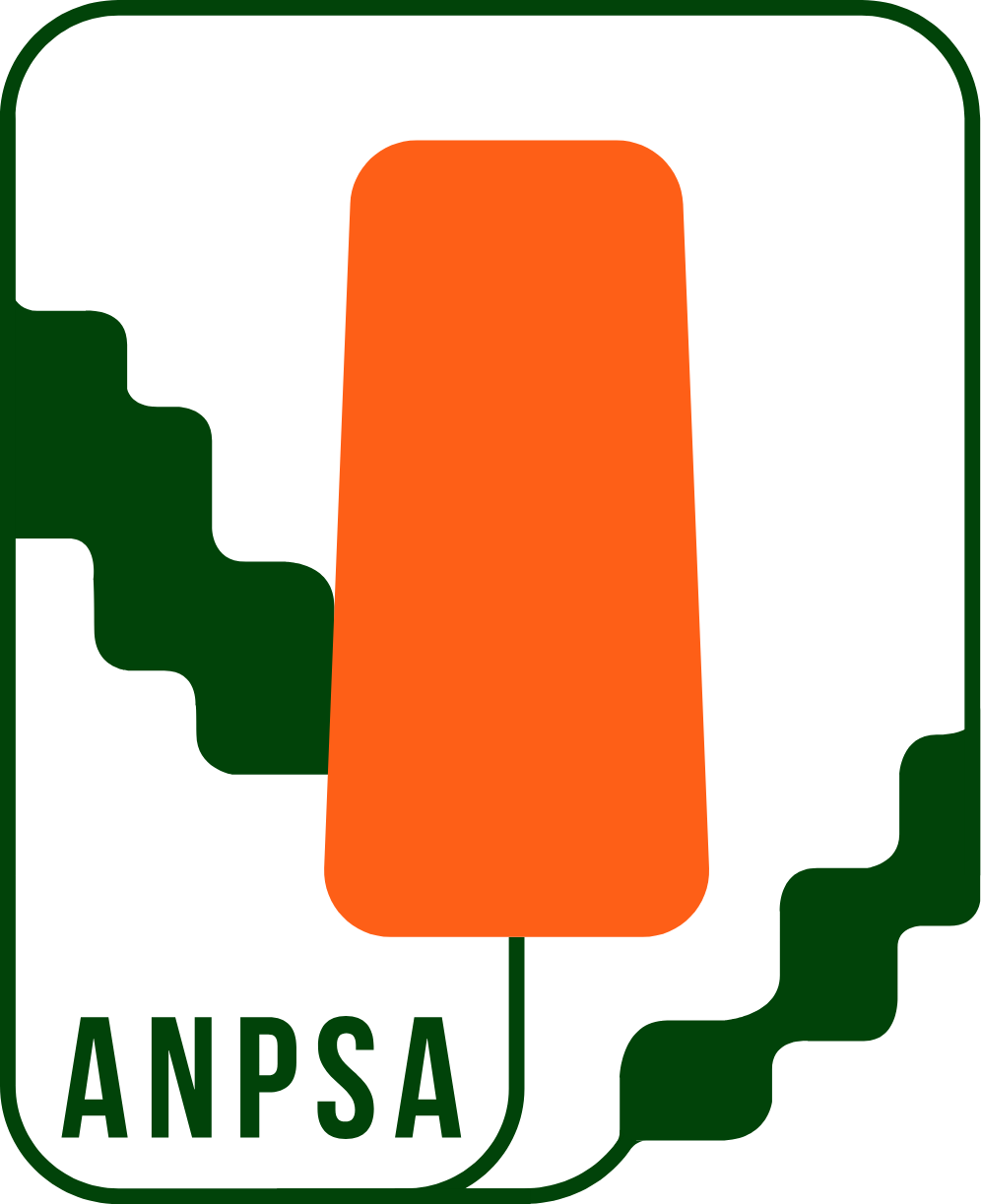 Australian Native Plants Society (Australia)
Australian Native Plants Society (Australia)